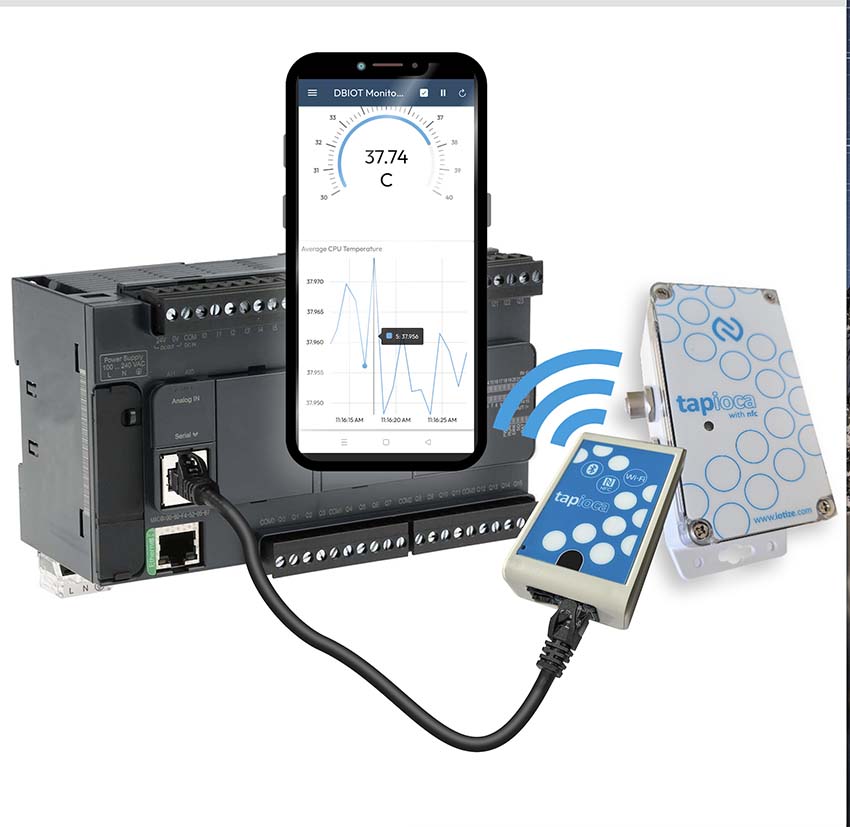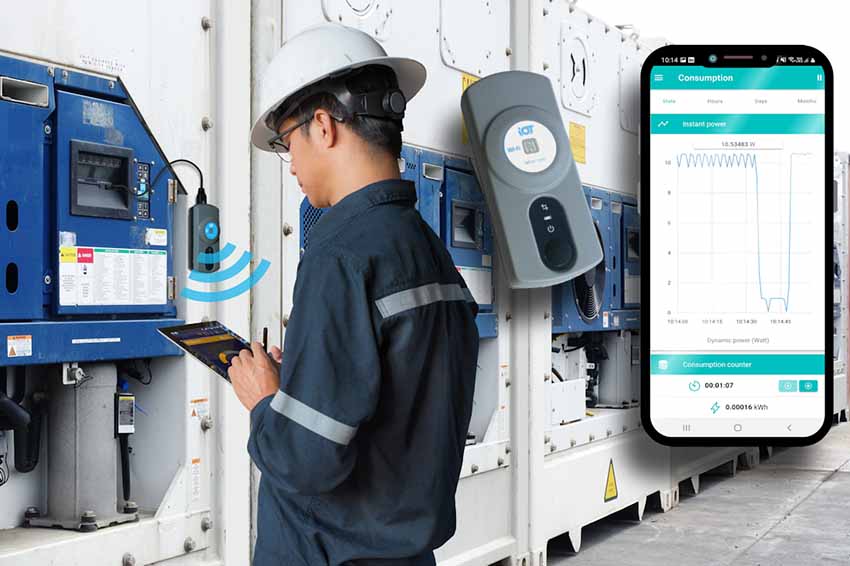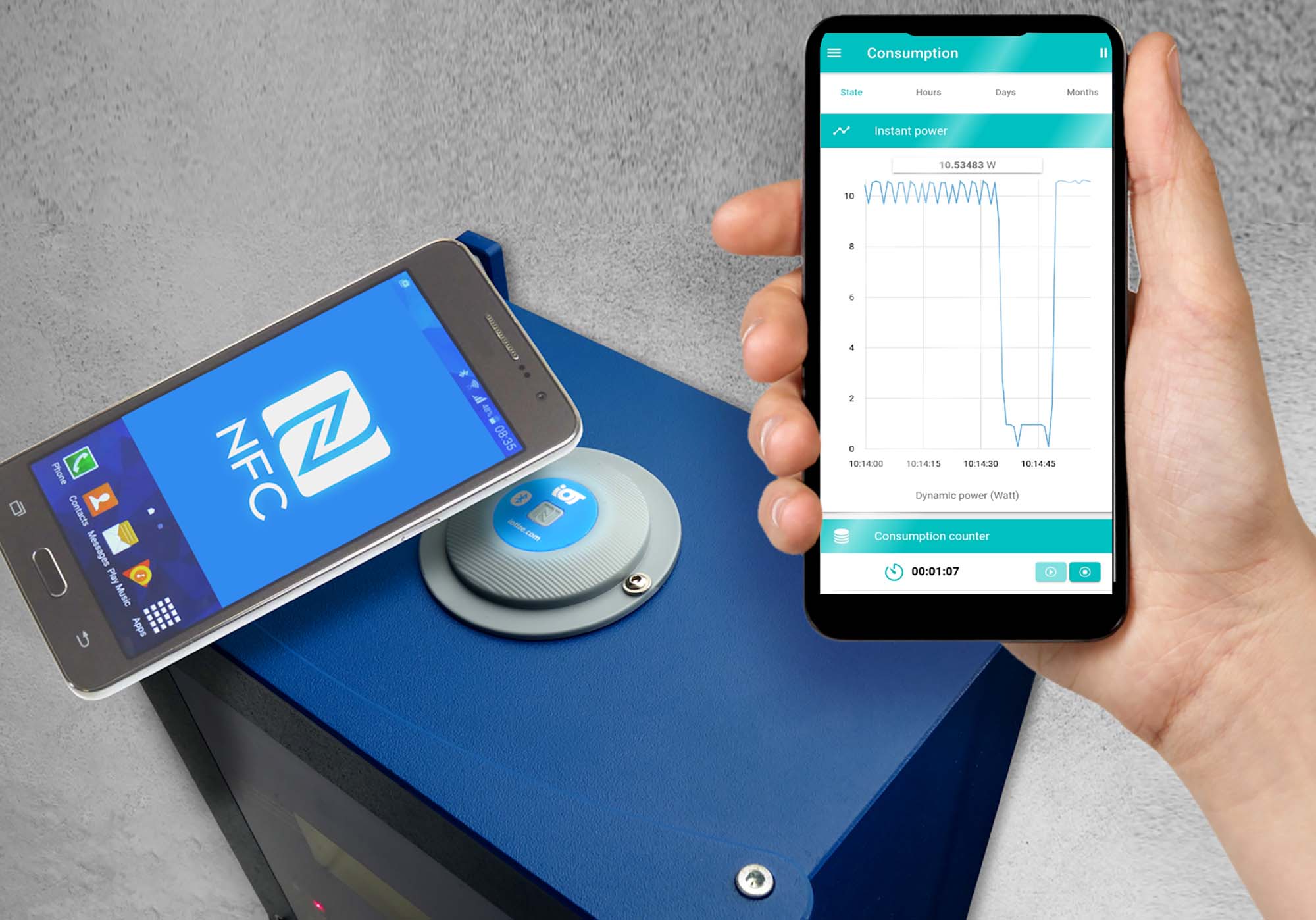IoTize is an innovating, French start-up, and B-to-B supplier of a wireless solution for companies that are creating mobile or cloud-connected equipment, sensors or appliances. Their solution is a unique implementation of STMicroelectronics’ microcontroller and Near Field Communication (NFC) technologies. It is widely recognized for its innovations and is the result of our team’s extensive experience in embedded system design.
This solution reduces the engineering effort required to create connected devices by a factor of at least 10 and allows customers to rapidly create human machine interfaces (HMI) as mobile apps, and to supervise their electronic systems from any cloud platform.
Interview with Steve Gussenhoven, Marketing & Communications Manager at IoTize.
Easy Engineering: What are the main areas of activity of the company?
Steve Gussenhoven: Our company is 80% R&D and primarily committed to evolving and maintaining our solution and software ecosystem for our customers. Based on the solution we manufacture and sell three lines of wireless hardware for industry and OEMs.
Where these customers require additional support, IoTize also provides software and hardware development services. We work with companies of all sizes and have developed our industrial solution working for companies such as Schneider Electric and Air Liquide.
E.E: What’s the news about new products?
S.G: Up until recently, all users of our wireless modules and industrial adapters had to use our PC-based software tools to configure their hardware and create their mobile apps.

In December 2022, we introduced an app called Tap Manager that offers an adaptable human-machine interface (HMI). Tap Manager allows users of our wireless devices to set them up and then create an HMI for their electronics directly on a mobile phone. They do all of this without writing a single line of code and with no expensive, complicated tools.
For industrial equipment owners and technicians, Tap Manager is revolutionary. They can immediately create a mobile HMI that corresponds to their maintenance requirements even if the original manufacturer doesn’t provide such apps. Our industrial fieldbus-to-wireless adapters plug directly into the Modbus ports that are commonly present on industrial equipment. In only minutes, a technician can configure the wireless adapter and create an HMI for viewing performance data, or even modifying the equipment’s operating parameters.
For OEMs, Tap Manager is also a great way to rapidly add wireless to an existing electronic design and create a mobile HMI as a proof-of-concept. This example shows how it’s done with STM32 and other ARM Cortex based microcontrollers.
E.E: What are the ranges of products?
S.G: We provide three lines of wireless hardware offering Near Field Communication, Bluetooth, Wi-Fi, LoRa, LTE, or NB-IOT. They are:
- Tapioca fieldbus-to-wireless adapters
- TapNPass autonomous, portable fieldbus-to-wireless adapters
- TapNLink wireless modules
Tapioca and TapNPass are finished wireless devices for equipment owners and technicians in industrial environments. Tapioca is for wireless retrofit of existing equipment. TapNPass are autonomous wireless tools that are typically used in equipment installation, commissioning, and servicing.
TapNLink is our line of wireless modules for embedded systems designers who want to integrate our wireless solution fully into their designs.

These lines of hardware products are supported by our software ecosystem which includes:
- Duetware embedded software that pre-implements all of the features required in a secure, connected system.
- New Tap Manager mobile app (iOS, Android) that allows users to configure Duetware features and create an HMI directly on their phone.
- IoTize Studio PC-based configuration environment that allows advanced users to configure Duetware’s features and launch the generation of their own mobile apps.
- IoTize App Generator server-based software tools that automatically generate an ionic app project and a test app (APK or IPA) that is based on the configuration from IoTize Studio.
E.E: At what stage is the market where you are currently active?
S.G: The industrial market that is key to IoTize’s business in the near future is maturing rapidly. Not only are there a wide range of IIoT connectivity and supervisory solutions on the market, but a recent McKinsey study shows that the Covid-19 crisis did a lot to affirm the advantages of these solutions for yesterday’s early adopters.
E.E: What can you tell us about market trends?
S.G: Clearly the market leaders are investing in innovative solutions that expedite production supply and maintenance efficiency. These evolutions include remote (cloud) supervisory solutions, but also a shift toward technologies that make on-site interventions more efficient. Only four years ago the use of mobile apps as interfaces in industrial equipment was considered forward looking. On-board LCDs, touchscreens, and keypads seemed to be permanently entrenched as the HMIs of choice for industry.
Today, all the leaders in industrial controllers have added or are adding mobiles as an HMI possibility in their offers. On board HMI are very costly and extremely inefficient for technicians to use. Whereas mobile apps are second nature to users, provide better navigability and visibility of complex data. Not to mention that mobile apps can evolve much more easily, allowing companies to adapt user interfaces according to their experience and to changing needs.
E.E: What are the most innovative products marketed?
S.G: Clearly, in today’s industrial environments artificial intelligence is the most innovative technology arriving on the market. But AI is not easily accessible most companies. What is it really? How do you implement it? What will it really do and what problems can it solve for me? For most companies, using AI is based largely on speculation.

This is why IoTize is taking the approach of first democratizing connectivity and easing data collection. We do this by helping companies of all sizes, integrate their equipment securely and efficiently with mobiles, networks and the cloud. Then, based on their experience, they can implement many additional technologies such as AI in future evolutions, and based on real experience and real data.
E.E: What estimations do you have for 2023?
S.G: We expect to see a much wider range of companies looking to technology for ways of improving access to machine data in order to better oversee their operations and maintenance. We expect to see more small and mid-size companies. We expect their emphasis will first be on maintenance because it is a primordial requirement (downtime kills the profit line), and it still requires costly human interventions that need both planning and supervision.
However, we also expect the lagging economy to strongly influence the solutions that these companies are looking for. Their emphasis will be on resolving common, key problems, pragmatically. Their emphasis will be on retrofitting for the IIoT and not retooling.


